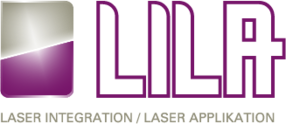Laser precision machining at LILA
MANY MATERIALS, DIFFERENT PROCESSES, MINIMUM TOLERANCES
Precision laser cutting
MATERIAL:
-
Steel
-
Hastelloy
-
Tungsten
-
Molybdenum
-
Ceramics
-
Silicon
-
Nickel alloys
-
Titanium
-
Non-ferrous and precious metals
Precision laser welding
MATERIAL:
-
Steel
-
Hastelloy
-
Tungsten
-
Molybdenum
-
Nickel alloys
-
Titanium
-
Non-ferrous and precious metals
Precision laser drilling
MATERIAL:
-
Steel
-
Hastelloy
-
Tungsten
-
Molybdenum
-
Ceramics
-
Silicon
-
Nickel alloys
-
Titanium
-
Non-ferrous and precious metals
MATERIAL THICKNESS:
- Steel: from 0.05 to 3 mm
- Ceramics: from 0.5 to 20 mm (depending on material)
WIDTH OF CUT:
- from 40μm
ADVANTAGES:
- sharp cutting edges
- low edge roughness
- cutting of complex geometries
- angled cuts possible with up to 25 degrees to the surface
ADVANTAGES:
-
high strength
-
no cracks in the material
-
gas-proof welds
-
exactly reproducible geometry of the weld area
-
welds even in depressions, hollows and through windows
-
highly accurate repeatability – through precisely defined welding parameters and lack of tool wear
MATERIAL THICKNESS:
- Steel: from 0.05 to 3 mm
- Ceramics: from 0.5 to 20 mm (depending on material)
PROCEDURE:
- Percussion drilling – with diameters from 20μm to 800μm
- Trepanning – with diameters from >800μm up to approx. ∞
ADVANTAGES:
- sharp drilling edges
- low edge roughness
- holes with positive and negative tapering of up to 25 degrees to the surface
ADDITIONAL BENEFITS FOR BRILLIANT RESULTS:
- touchless and force-free processing method
- no deformation of the work pieces
- low heat influence
- long service life – due to lack of tool wear
- makes economic sense for single productions as well as small batches
- high system flexibility and quality standards
